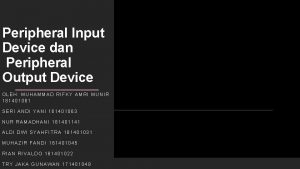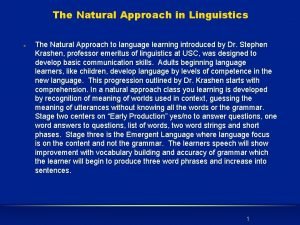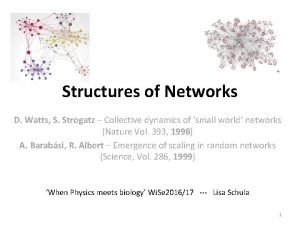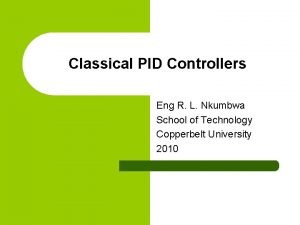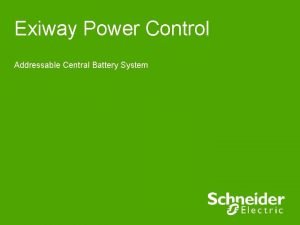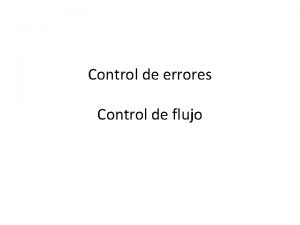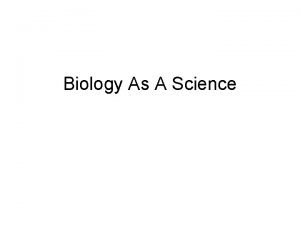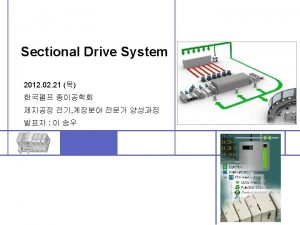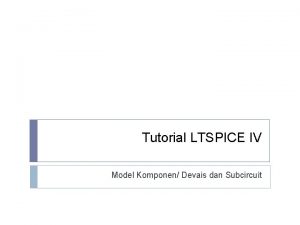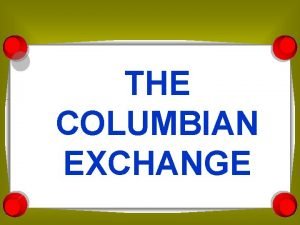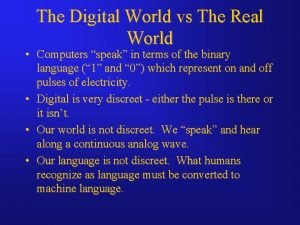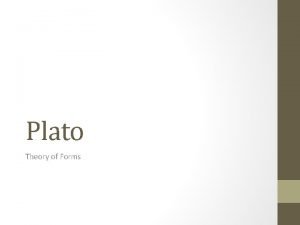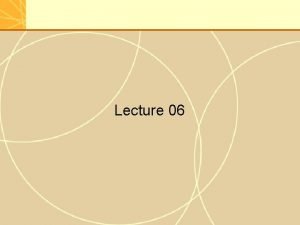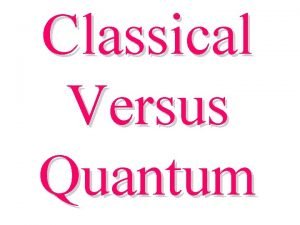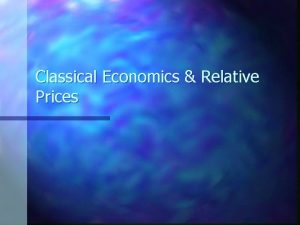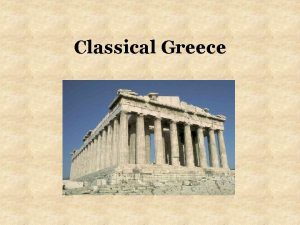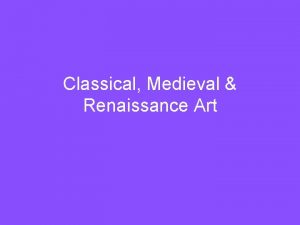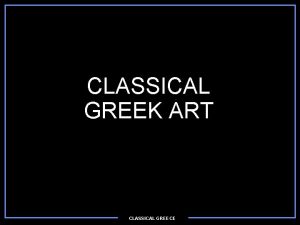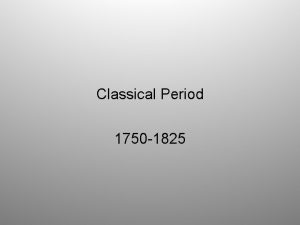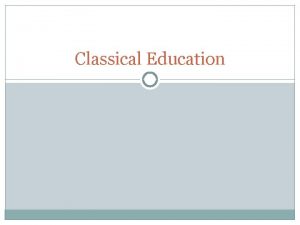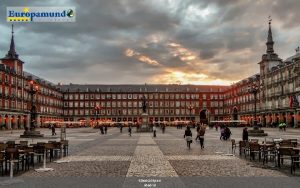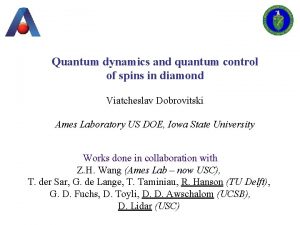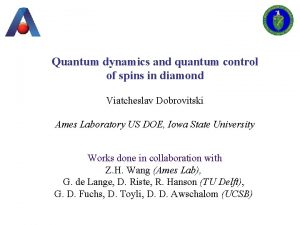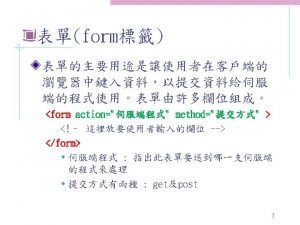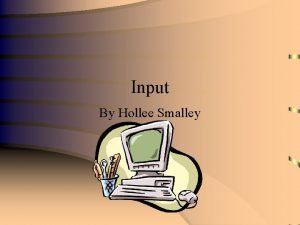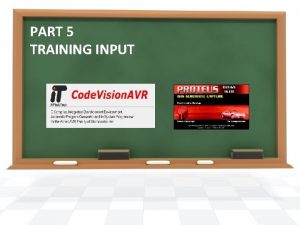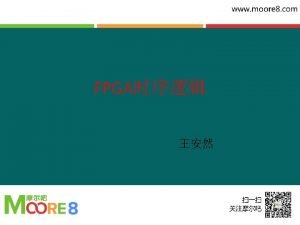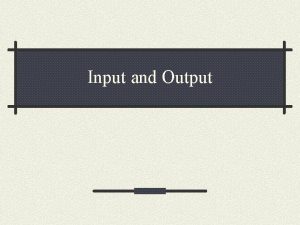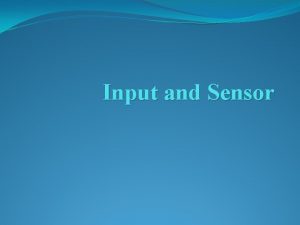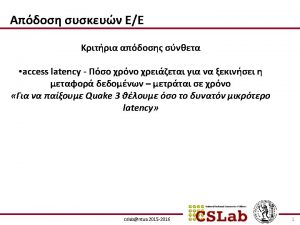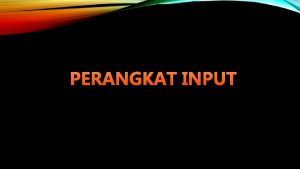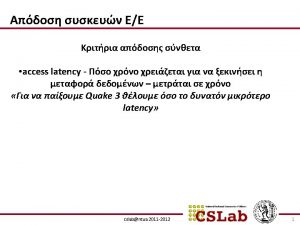Quantum Control Classical Input Preparation QUANTUM WORLD Dynamics
































- Slides: 32

Quantum Control Classical Input Preparation QUANTUM WORLD Dynamics Readout Classical Outp QUANTUM INFORMATION INSIDE

Q. C. Paradigms Hilbert Space Yes Yes

Hilbert spaces are fungible ADJECTIVE: ETYMOLOGY: 1. Law. Returnable or negotiable in kind or by substitution, as a quantity of grain for an equal amount of the same kind of grain. 2. Interchangeable. Medieval Latin fungibilis, from Latin fung (vice), to perform (in place of). Subsystem division 2 qubits; D = 4 Unary system D=4

Example: Rydberg atom http: //gomez. physics. lsa. umich. edu/~phil/qcomp. html

We don’t live in Hilbert space A Hilbert space is endowed with structure by the physical system described by it, not vice versa. The structure comes from preferred observables associated with spacetime symmetries that anchor Hilbert space to the external world. Hilbert-space dimension is determined by physics. The dimension available for a quantum computation is a physical quantity that costs physical resources. What physical resources are required to achieve a Hilbert-space dimension sufficient to carry out a given calculation? quant-ph/0204157

Hilbert space and physical resources Hilbert-space dimension is a physical quantity that costs physical resources. Single degree of freedom Action quantifies the physical resources. Planck’s constant sets the scale.

Hilbert space and physical resources Primary resource is Hilbert-space dimension costs physical resources. Many degrees of freedom Number of degrees of freedom Hilbert-space dimension measured in qubit units. Identical degrees of freedom Scalable resource requirement Strictly scalable resource requirement qudits

Hilbert space and physical resources Primary resource is Hilbert-space dimension costs physical resources. Many degrees of freedom x 3, p 3 x 2, p 2 x 1, p 1 x, p

Quantum computing in a single atom Characteristic scales are set by “atomic units” Length Momentum Action Energy Bohr Hilbert-space dimension up to n 3 degrees of freedom

Quantum computing in a single atom Characteristic scales are set by “atomic units” Length Momentum Action Energy Bohr Poor scaling in this physically unary quantum computer 5 times the diameter of the Sun

Other requirements for a scalable quantum computer Avoiding an exponential demand for physical resources requires a quantum computer to have a scalable tensor-product structure. This is a necessary, but not sufficient requirement for a scalable quantum computer. Are there other requirements? Di. Vincenzo’s criteria Di. Vincenzo, Fortschr. Phys. 48, 771 (2000) 1. Scalability: A scalable physical system with well characterized parts, usually qubits. 2. Initialization: The ability to initialize the system in a simple fiducial state. 3. Control: The ability to control the state of the computer using sequences of elementary universal gates. 4. Stability: Long decoherence times, together with the ability to suppress decoherence through error correction and fault-tolerant computation. 5. Measurement: The ability to read out the state of the computer in a convenient product basis.

Physical resources: classical vs. quantum Classical bit A few electrons on a capacitor A pit on a compact disk A classical bit involves many degrees of freedom. Our scaling analysis applies, but with a basic phase-space scale of arbitrarily small. Limit set by noise, not fundamental physics. A 0 or 1 on the printed page A smoke signal rising from a distant mesa The scale of irreducible resource Quantum bit requirements is always set by An electron spin in a semiconductor Planck’s constant. A flux quantum in a superconductor A photon of coupled ions Energy levels in an atom

Why Atomic Qubits? State Preparation • Initialization • Entropy Dump Laser cooling State Manipulation • Potentials/Traps • Control Fields • Particle Interactions Quantum Optics NMR State Readout • Quantum Jumps • State Tomography • Process Tomography Fluorescence

Optical Lattices

Designing Optical Lattices Tensor Polarizability P 3/2 -3/ 2 -1/2 1 S 1/2 2 3 -1/2 1 3 2 3 3/2 1 1 ( a ij = - a 0 2 d ij + i e ijk s k ) 3 1/2 Effective scalar + Zeeman interaction

Lin-q-Lin Lattice

Multiparticle Controlled Collisions

Dipole-Dipole Interactions • Resonant dipole-dipole interaction + - d V dd ~ 3 r 2 (Quasistatic potential) + - G tot = G ¢ + G dd £ 2 G ¢ 2 d h. G ¢ ~ 3 D (Dicke Superradiant State) Figure of Merit

Cooperative level shift Bare Coupled g 1 e 2 g 1 g 2 e 1 e 2 ¢ e 1 e 2 e 1 g 2 Dressed Vdd y. D g 1 g 2 y+ y+ ¢ g 1 g 2 ¢

Two Gaussian-Localized Atoms r 12

Three-Level Atoms Atomic Spectrum “Molecular” Spectrum

Molecular Hyperfine “Molecular” Spectrum Atomic Spectrum 0. 8 GHz F=2 F=1 F=2 5 P 1/2 6. 8 GHz F=1 5 S 1/2 87 Rb Brennen et al. PRA 65 022313 (2002)

Controlled-Phase Gate Fidelity Figure of Merit: E 11 + E 00 - 2 E 01 DEc k= = h. Gij Resolvability = Fidelity

Controlled-Phase Gate Fidelity

Leakage: Spin-Dipolar Interaction Noncentral force azimuthally symmetric trap

Suppressing Leakage Through Trap Energy and momentum conservation suppress spin flip for localized and separated atoms.

Dimer Control • Lattice probes dimer dynamics • Localization fixes internuclear coordinate

Separated-Atom Cold-Collision Short range interaction potential, well characterized by a hard-sphere scattering with an “effective scattering length”.

Energy Spectrum

Shape Resonance Molecular bound state, near dissociation, plays the role of an auxiliary level for controlled phase-shift.

Dreams for the Future • Qudit logic: Improved fault-tolerant thresholds? • Topological lattice - Planar codes?

http: //info. phys. unm. edu/~deutschgroup I. H. Deutsch, Dept. Of Physics and Astronomy University of New Mexico Collaborators: • Physical Resource Requirements for Scalable Q. C. Carl Caves (UNM), Robin Blume-Kohout (LANL) • Quantum Logic via Dipole-Dipole Interactions Gavin Brennen (UNM/NIST), Poul Jessen (UA), Carl Williams (NIST) • Quantum Logic via Ground-State Collisions René Stock (UNM), Eric Bolda (NIST)
 Quantum physics vs quantum mechanics
Quantum physics vs quantum mechanics Quantum physics vs quantum mechanics
Quantum physics vs quantum mechanics Berikut ini adalah salah satu peripheral input adalah
Berikut ini adalah salah satu peripheral input adalah Finely tuned input and roughly tuned input
Finely tuned input and roughly tuned input Dynamics of what a wonderful world
Dynamics of what a wonderful world Collective dynamics of small world networks
Collective dynamics of small world networks Classical pid control
Classical pid control Central battery system price list
Central battery system price list Translational research institute on pain in later life
Translational research institute on pain in later life Process control and product control
Process control and product control Reynolds transport theorem
Reynolds transport theorem Stock control e flow control
Stock control e flow control Control volume vs control surface
Control volume vs control surface Positive and negative controls
Positive and negative controls What is variable in research
What is variable in research Jelaskan tentang error control pada data link control?
Jelaskan tentang error control pada data link control? Control de flujo parada y espera
Control de flujo parada y espera Negative control vs positive control examples
Negative control vs positive control examples Flow control and error control
Flow control and error control Sectional drive
Sectional drive Komponen pada ltspice
Komponen pada ltspice Old world monkeys vs new world monkeys
Old world monkeys vs new world monkeys Coffee new world or old world
Coffee new world or old world Real world vs digital world
Real world vs digital world The world of the forms
The world of the forms Ap world history chapter 25 africa and the atlantic world
Ap world history chapter 25 africa and the atlantic world The changing world output and world trade picture
The changing world output and world trade picture Bad world tour
Bad world tour An elementary school classroom in a slum poem analysis
An elementary school classroom in a slum poem analysis Civilized dome riding all cities figure of speech
Civilized dome riding all cities figure of speech Unit 9 english in the world
Unit 9 english in the world The changing world output and world trade picture
The changing world output and world trade picture Dynamics nav distribution
Dynamics nav distribution


